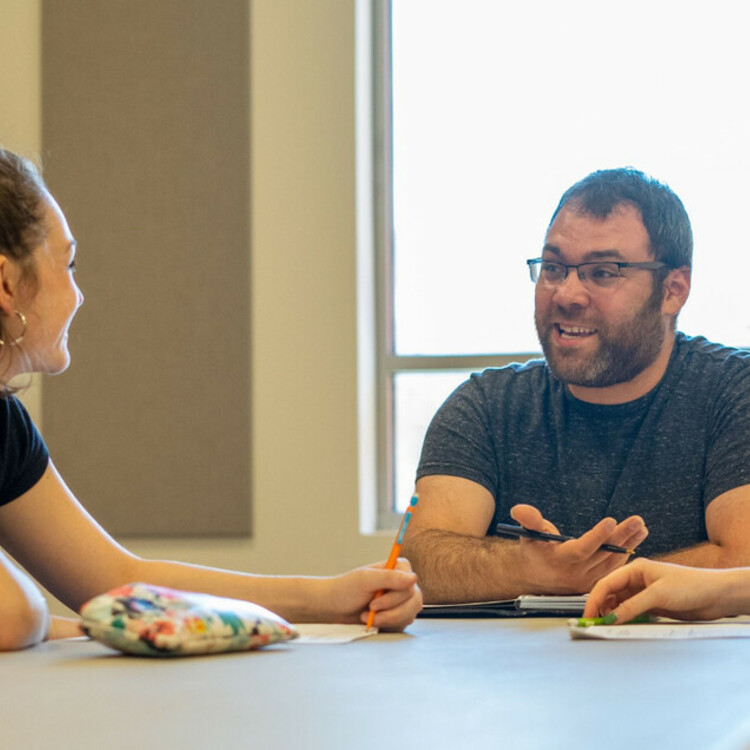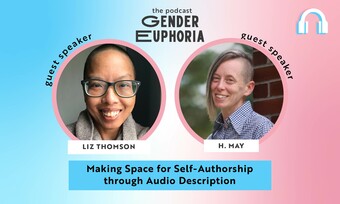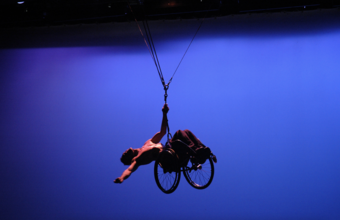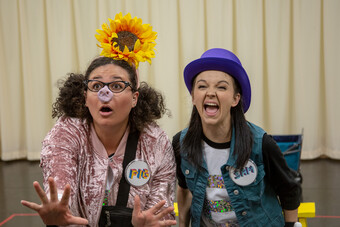It’s 2019, and I am walking into a prominent American theatre to see a well-reviewed production. This production is intended to examine a specific disability in an honest and exciting light to change our cultural understanding of disability. As a disabled theatremaker and activist, I anticipated an honest portrayal of both the hardships and celebrations of being disabled in America. Except this doesn’t do that. Instead, it follows a familiar pattern of sacrificing disabled truth for an unsettling, two-dimensional depiction of disability filled with clichés and stereotypes. The playwright wrote the disabled character as a shell of a human, an able-bodied writer’s judgement on how a disabled individual interacts with the world around them. That night, I leave at intermission, discouraged but unsurprised at yet another portrayal of disability as “lesser than.”
This experience is not new to the disability community, or frankly to any marginalized community in America. We are inundated with stories written solely through tropes. I define the term “tropes” as significant and recurring character motifs present in popular culture that homogenize a group’s experience. Every sociopolitical minority has their own collection of emotionally exhausting tropes, which generally exploit marginalized identities to engage privileged audiences rather than those who are in the marginalized group. Stories use these tropes to create catharsis, or emotional release, in those who are part of the majority.
What Are the Tropes?
The “Gentleman Freak” refers to any story where a physically disabled character, often referred to as deformed, terrifies society with their very presence. Eventually, a brave, nondisabled character sees that they are not scary at all and befriends them, realizing that they are, in fact, more “civilized” than any of the other characters in the play. While this trope is present in virtually any story about the freak shows of old, there is no better example than Joseph Merrick in The Elephant Man. Merrick was born with a physical disability, and his appearance scares society and is considered monstrous. After a nondisabled character realizes that Merrick’s demeanor does not match his exterior, he considers Merrick the perfect gentleman. This characterization looks at disability on a binary: in these stories, the disabled person is either evil or a saint. There is no middle ground from which an actual human could emerge. In addition, the whole idea of “gentleman” is based on a neurotypical idea of status quo. Merrick’s behavior mimics a nondisabled expectation of what it means to be a human. As with many of the tropes, the Gentleman Freak focuses on cathartic release for the nondisabled audience rather than an honest portrayal of disability. Because of this, many of these stories end with the disabled character dying to create a tearjerker.
This characterization looks at disability on a binary: in these stories, the disabled person is either evil or a saint. There is no middle ground from which an actual human could emerge.
Tiresias, the recurring blind prophet of Greek theatre, is the prototype for the “Magical Freak” trope. This trope, akin to the “Magical Negro,” presents a disabled person who possesses special insight or mystical powers that are in direct opposition to their disability. In many Greek plays, Tiresias enters and predicts tragedy. The nondisabled main character often disregards him, calling him an ancient or foolish old man and teasing him about his blindness. Tiresias’s character is grounded in the idea that while Tiresias cannot see in the traditional sense, his prophetic powers allow him to see into the future. By assigning the only disabled character a nonhuman trait, this trope positions disability as “other” or “inhuman,” rather than as a part of the human condition. This distinction separates the disabled characters from all other characters in the story, ensuring that the Magical Freak is rarely the focus, but rather a prop in a plot that centers nondisabled characters. Because of this, the character rarely shows any sort of personality trait that is unrelated to their disability. They aren’t a human; they are an entity.










Comments
The article is just the start of the conversation—we want to know what you think about this subject, too! HowlRound is a space for knowledge-sharing, and we welcome spirited, thoughtful, and on-topic dialogue. Find our full comments policy here
Wow! Amazing article and I recognize every one of those tropes as I have seen them in media. This essay should be required reading for all who produce theater/movies/tv. It will be up to those persons to "correct" the tropes before they are perpetuated. They will be the ones who educate the writers of the ignorant/unintentionally offensive material, and they will also educate the public.
As a person who reads new play submissions for a couple of local theaters, I will personally be watchful of the characters and language used in the submissions I read.
Best wishes to you!
Thank you for this lovely essay. It got me thinking about the relationship between tropes and dramaturgy. It has made me mindful that if can be tempting to write a part that fills a dramaturgical need in a work and frequently an "outsider" is enlisted to serve that role. Perhaps every time we ask ourselves what dramaturgical function this or that character serves in the play, we must immediately follow with - and how to we do that in the context of their realized humanity.